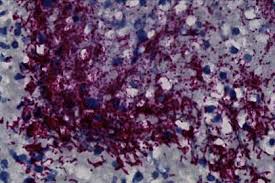Tokyo Tech's Breakthrough in Eco-Friendly High-Efficiency TEMs

Tokyo Tech Scientists Develop Eco-Friendly High-Efficiency Thermoelectric Materials
A team of scientists from Tokyo Institute of Technology has made a significant advancement in the field of thermoelectric materials (TEMs), creating an eco-friendly alternative with high energy conversion efficiency. These innovative materials, known as inverse-perovskites, promise to overcome the longstanding challenges of conventional TEMs, which often involve low energy conversion efficiency and the use of toxic elements such as lead (Pb) and tellurium (Te).
Revolutionizing Thermoelectric Materials
The newly developed TEMs, identified by the chemical formula Ba3BO, where B represents silicon (Si) and germanium (Ge), diverge from the traditional path. They not only shun toxic elements but also exhibit superior thermoelectric properties compared to existing eco-friendly TEMs. This breakthrough, as documented in Advanced Science, indicates that these inverse-perovskites achieve low thermal conductivity (1.0-0.4 W/mK at a temperature of 300-600 K) and high power factor, contributing to their high figure of merit (ZT) values of 0.16-0.84 at T = 300-623 K.
Future Prospects and Implications
Theoretical calculations suggest that with optimized hole concentration, the ZT could be raised to 2.14 for Ba3SiO and 1.21 for Ba3GeO at T = 600 K. These figures hold their own against those of toxic TEMs and even surpass the metrics of other environmentally friendly TEMs. The impressive ZT in Ba3BO can be attributed to the unique structure of inverse-perovskites. In these materials, the cation and anion sites are inverted, leading to a network of weak O-Ba bonds that reduce thermal conductivity. Moreover, the B anions play a crucial role in carrier transport, ensuring a high power factor.
This development represents a substantial contribution to the advancement of non-toxic TEMs suitable for practical applications. It not only opens up new opportunities in materials science but also paves the way for the broader use of thermoelectric materials in everyday life. As the world continues to grapple with energy challenges and environmental concerns, the emergence of high-efficiency, eco-friendly TEMs could be a game-changer, transforming the way we harness and utilize energy.


 United Kingdom
United Kingdom Argentina
Argentina  Australia
Australia  Austria
Austria  Brazil
Brazil  Canada
Canada  Germany
Germany  Ireland
Ireland  Italy
Italy  Malaysia
Malaysia  Mexico
Mexico  New Zealand
New Zealand  Poland
Poland  South Africa
South Africa  United States
United States 

























